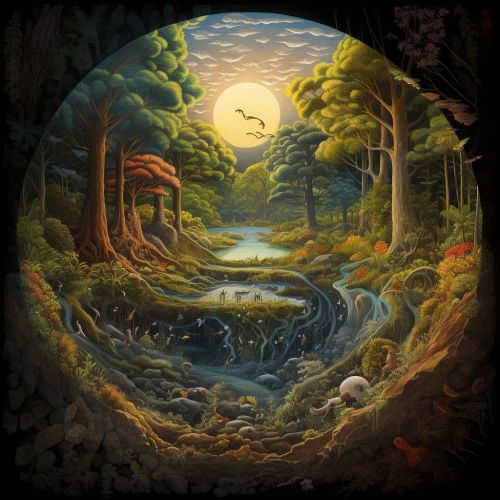The Chemistry of Deep Earth Carbon Cycles
Introduction
The deep earth carbon cycle is an intricate process that involves the exchange of carbon between the Earth's surface and its deep interior. This process plays a crucial role in the global carbon cycle and has significant implications for the Earth's climate and habitability.


Carbon in the Earth's Interior
Carbon is a key element in the Earth's interior, where it exists in various forms such as carbonate minerals, diamonds, and carbon dioxide in the mantle and core. The carbon in the Earth's interior is primarily derived from the surface through subduction of oceanic crust, which carries carbon-rich sediments into the mantle.
Carbon Transport Mechanisms
There are several mechanisms through which carbon is transported from the Earth's surface to its interior and vice versa. These include subduction, volcanism, and mantle convection.
Subduction
Subduction is the process by which oceanic crust sinks into the mantle at subduction zones. The oceanic crust carries carbon-rich sediments, which are then subjected to high pressures and temperatures in the mantle. This leads to the release of carbon dioxide, which can either be recycled back to the surface through volcanism or stored in the mantle.
Volcanism
Volcanism is another important mechanism for the transport of carbon. During volcanic eruptions, carbon dioxide is released from the mantle into the atmosphere. This process is particularly prevalent at mid-ocean ridges and hotspots, where mantle plumes bring carbon-rich magma to the surface.
Mantle Convection
Mantle convection is the slow creeping motion of Earth's solid silicate mantle caused by convection currents driven by heat from the core. This process plays a significant role in the deep earth carbon cycle as it aids in the transport of carbon from the surface to the deep interior and vice versa.
Carbon Storage in the Deep Earth
The deep earth is a major reservoir of carbon, with estimates suggesting that it may contain more carbon than the surface reservoirs combined. The storage of carbon in the deep earth occurs primarily in the form of carbonate minerals and diamonds in the mantle and core.
Carbonate Minerals
Carbonate minerals are a group of minerals that contain the carbonate ion, CO3^2-. These minerals are formed in the mantle through reactions between carbon dioxide and other minerals. Carbonate minerals are stable at high pressures and temperatures, making them an important form of carbon storage in the deep earth.
Diamonds
Diamonds are another form of carbon storage in the deep earth. They are formed in the mantle under high-pressure, high-temperature conditions, and can encapsulate carbon for billions of years. Diamonds are brought to the surface through volcanic eruptions, specifically through a type of eruption known as a kimberlite eruption.
Implications for the Global Carbon Cycle and Climate
The deep earth carbon cycle plays a crucial role in the global carbon cycle and has significant implications for the Earth's climate. The exchange of carbon between the surface and the deep interior influences the concentration of carbon dioxide in the atmosphere, which is a key driver of climate change.
Conclusion
Understanding the chemistry of the deep earth carbon cycle is vital for understanding the Earth's carbon budget and predicting future climate change. Despite significant advances in our understanding, many questions remain about the exact mechanisms and rates of carbon transport and storage in the deep earth.
